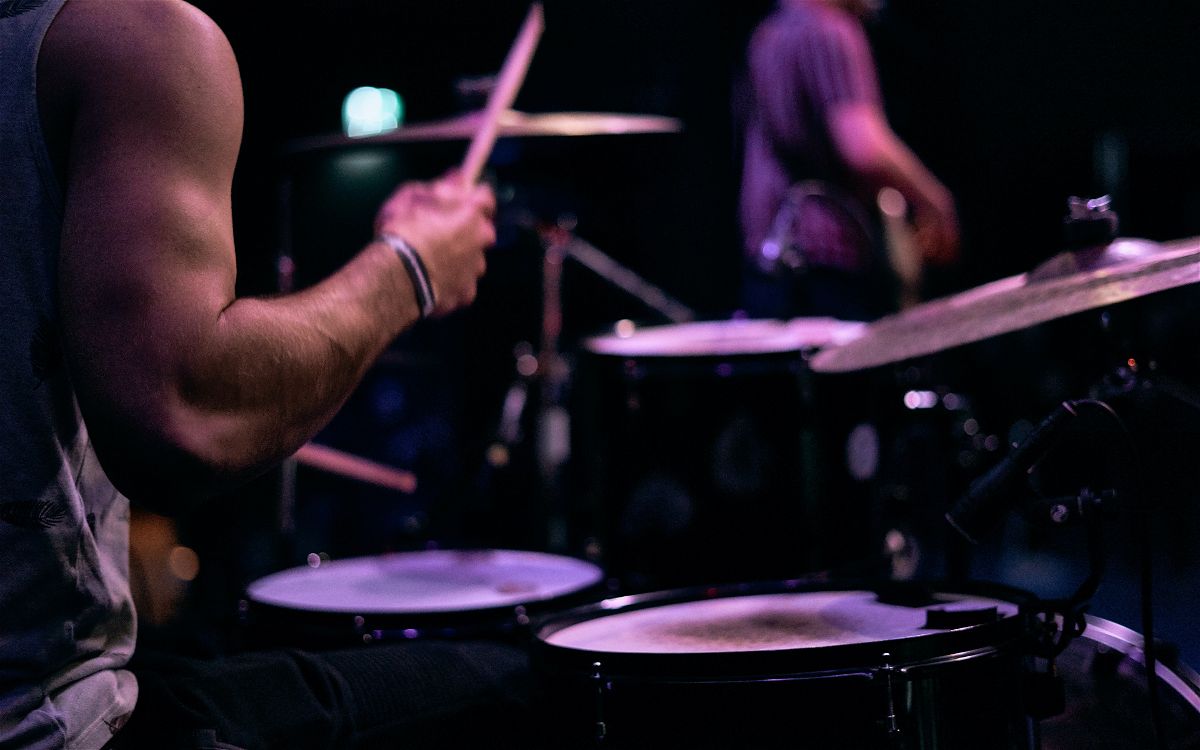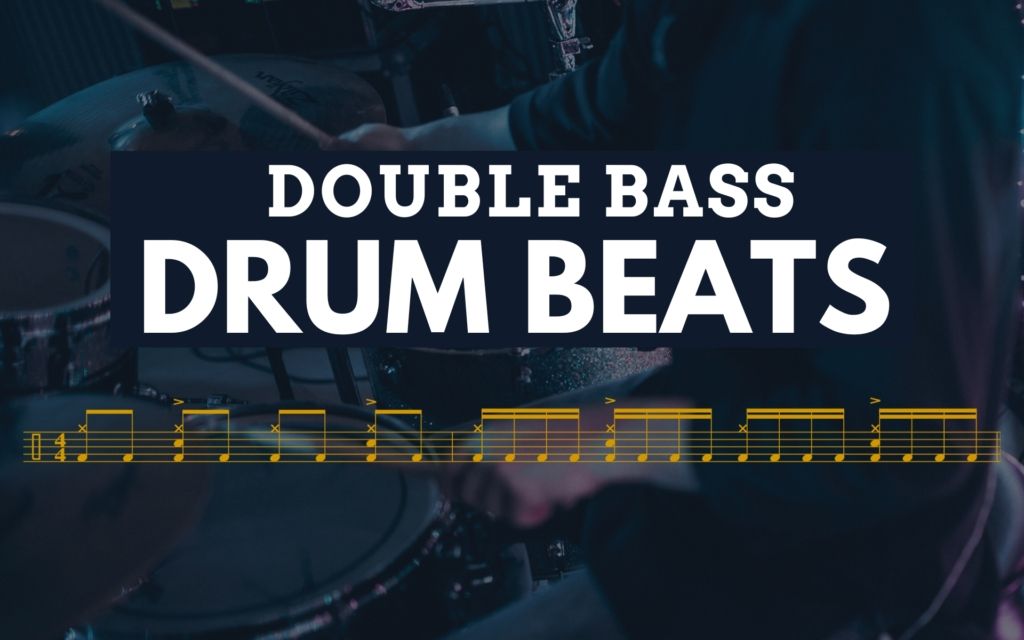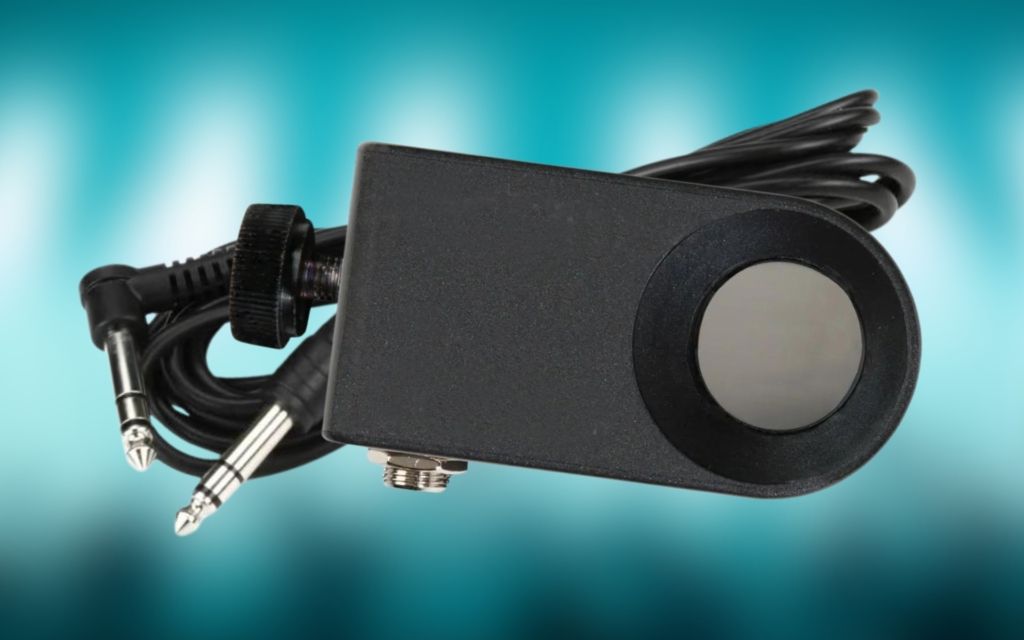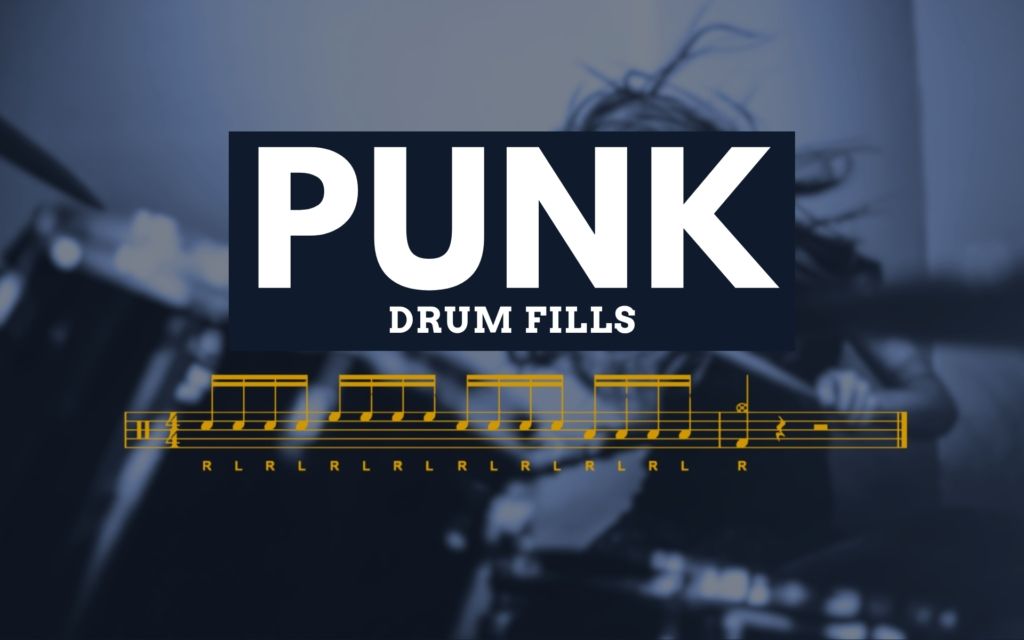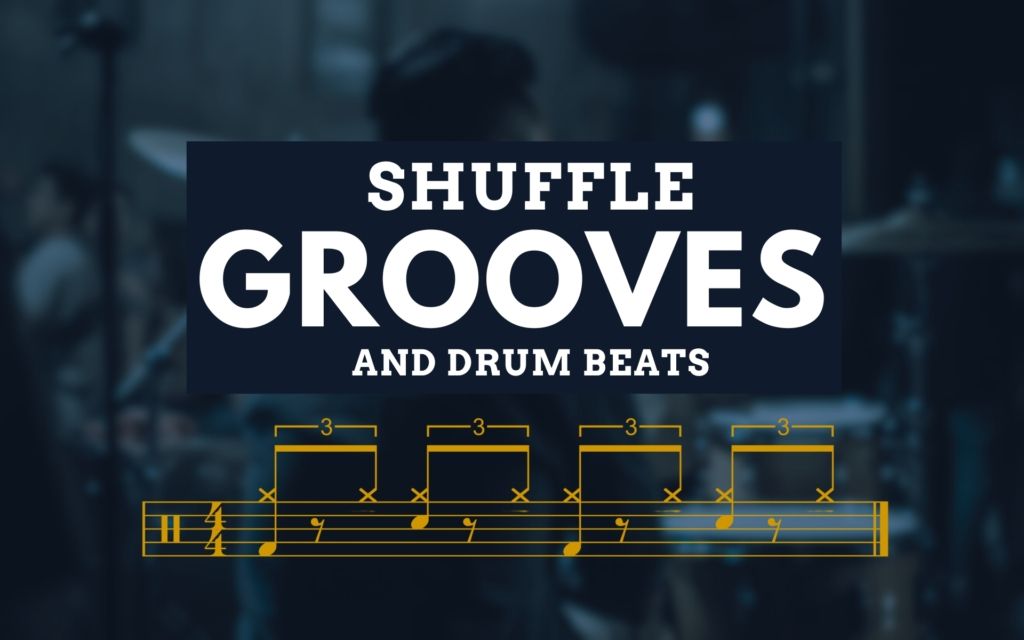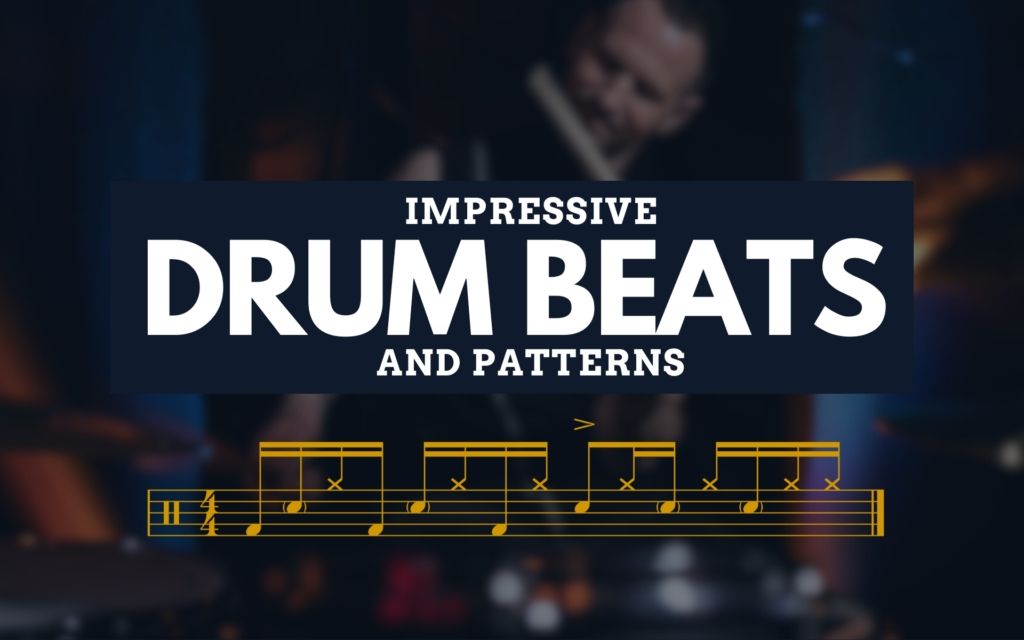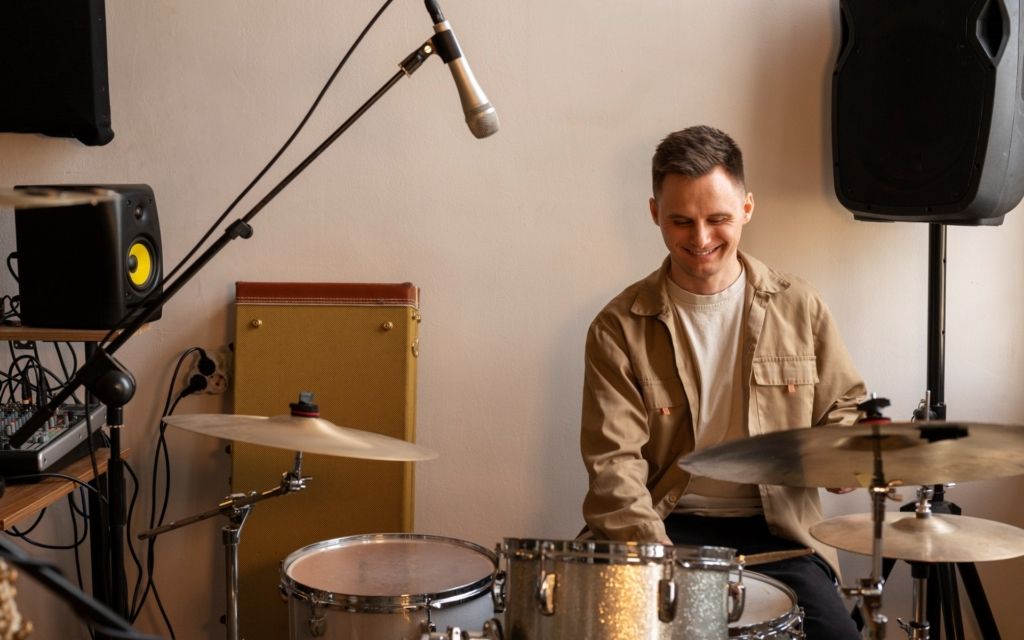Wondering what muscles drumming works is something that every drummer has wondered at some point in their drumming journey. Drums are an instrument that requires energy and force from your whole body, so there are several drumming muscles used every time you play.
In this guide, we’re going to look at what those muscles are. I’ll explain how drumming affects those muscles, and I’ll give a few tips on how to build them to improve your drumming skills.
Contents
What Muscles Do Drummers Use?
Forearm Muscles
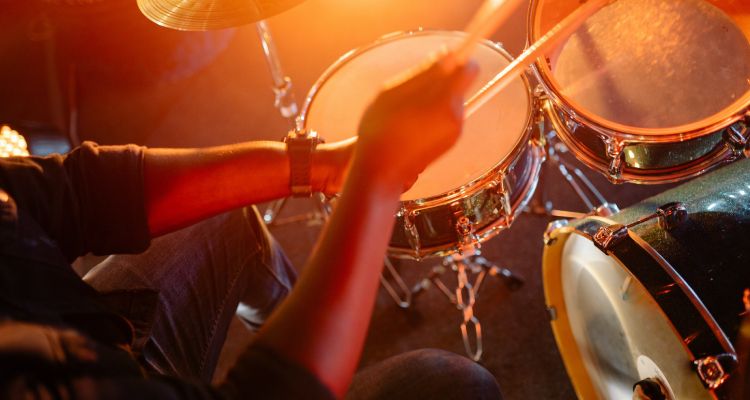
Your forearms are some of the main muscles used when you play the drums. Drumming is all about wrist and finger control, and you use your forearm muscles for that.
The muscles in your forearms are known as the pronator quadratus, flexor pollicis longus, and flexor digitorum profundus. These all work in conjunction to give you arm, wrist, and finger control.
If you strengthen these muscles, you’ll have more endurance when you play drums. A good way to work on them to improve your drumming is by working on rudiments on a practice pad.
Triceps
Triceps are another heavily utilized muscle when playing the drums, as they’re vital for performing certain actions.
Your tricep muscles allow you to extend your arms fully. This means that you use them whenever you move your arms around the kit to reach different drums or cymbals. You also activate your triceps when you lift your arms up to strike the drums hard.
The stronger your triceps are, the harder you’ll be able to strike the drums. However, you need to work on striking technique along with that, as just using brute force may lead to a drumming injury.
Shoulder Muscles
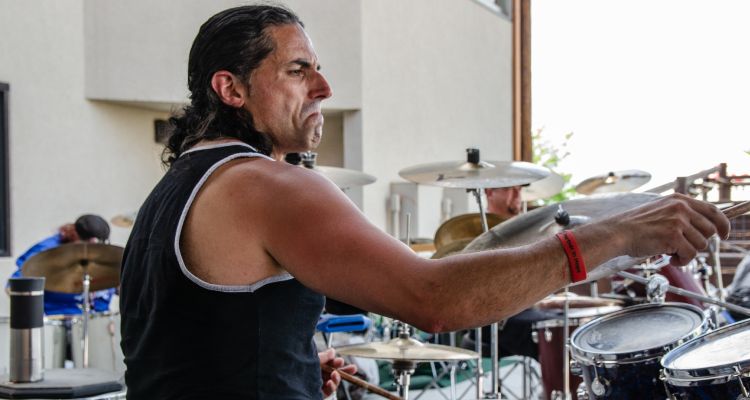
Another name for your shoulder muscles is deltoids. You have front, middle, and rear delts, and they all activate when you move your arms.
Your shoulders allow you to lift your arms up. They also allow you to rotate them. So, your deltoids are constantly being worked when you play the drums.
Something to be careful of is lifting your arms too high repeatedly when you play the drums. You could potentially damage your rotator cuffs near your delts.
So, you should aim to play drums with as little shoulder movement as possible. Doing shoulder muscle strength training will also help avoid injuries.
Calf Muscles
If you play the drum pedals with your heels up, your calf muscles will be heavily utilized. When you press down on a pedal with your toes, your calf muscles will activate.
However, we use a combination of our calves and entire leg when playing heel up, so your calves aren’t as utilized compared to if you were to do calf raising exercises.
Some drummers like to play heel-up on the bass drum pedal and heel-down on the hi-hat pedal. In that case, your calf muscles will only be used in your leg near the bass drum.
Shin Muscles
Your shin muscles are used when you play the pedals with your heels down. These muscles allow you to lift your feet up and down.
Many drummers prefer playing with their heels down, and this causes them to work their shins more than drummers who play with their heels up.
Some drummers switch between heel-down and heel-up stances when drumming. These drummers will have their calf muscles and shin muscles worked according to which stance they use at different times.
The best way to work your calves and shins is to do leg raises. This will increase endurance. If you play with a double pedal, your calves and shins will be worked even more than other drummers.
Core Muscles
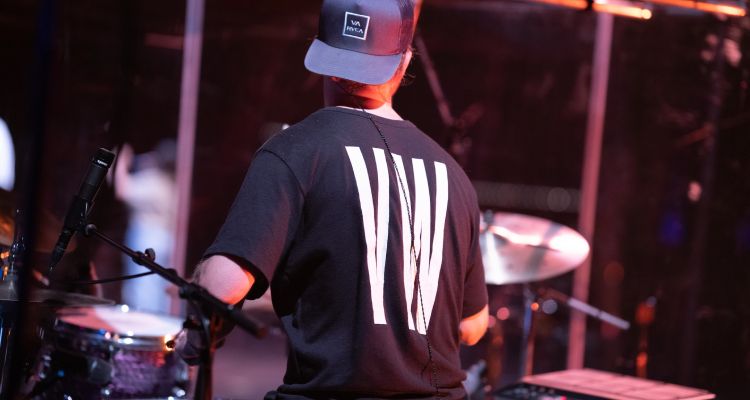
Your core muscles are always activated when playing the drums, as you’re typically sitting on a chair with no backrest. Your core muscles keep you stable, and your posture becomes better when you have good core strength.
It’s essential to have good posture when drumming so that you don’t develop back problems, so working on your core will help you keep your upper body stabilized.
If you find yourself slouching at the drum kit, it’s most probably because you’re not using your core muscles as much as you should be. Crunches and planks are excellent exercises to help in this area.
Hip Flexors
Your hip flexors are the muscles that connect your legs to your waist. These are used in drumming when you lift your legs to play the pedals.
Drummers who play with their heels up tend to work their hip flexors a lot more while playing, but heel-down drummers also use these muscles when they raise their legs to play loud strokes on the pedals.
The trick with these is that you shouldn’t be stressing them too much. If your drum throne height is too low, you’ll work your hip flexors than you should. So, make sure to sit high enough to let gravity do the work.
Does Drumming Give You Muscle?
Drumming doesn’t give you muscle in the same way that lifting weights will. The way to build muscle is to break your muscle fibers down to build them back up stronger. When playing the drums, you don’t put enough strain on your muscles to break down those fibers.
If drumming did give you muscle mass, we’d all be a lot more muscular than we currently are. So, the idea that drummers become muscular is mostly a myth.
However, drumming does do a great job of toning your muscles slightly. The results aren’t life-changing, but they’re proof that drumming is good for your body.
Final Thoughts
To give a quick recap on what muscles drumming works, every drummer utilizes their forearms, triceps, shoulders, calves, shins, core, and hip flexors when playing the drums.
All the best drumming techniques will have you utilizing these muscles to play things on the drums that would typically feel difficult for your body. The more you play the drums, the more these muscles will develop and get worked.
Just remember that playing the drums won’t give you huge muscles. You need to go to the gym and eat for that.

